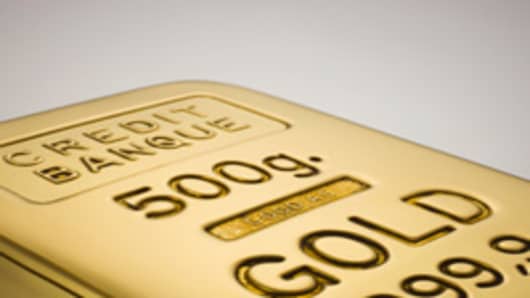Global demand for gold fell 5 percent in the first quarter to 1,097.6 tones, according to the World Gold Council (WGC), driven by a decline in jewelry and central bank buying.
Purchases by the “official sector”, largely made up by central banks, fell 41 percent to 80.8 tones, while demand in the jewelry sector slipped 6 percent to 519.8 tones as a result of higher prices, the London-based industry group said Thursday in a report.
Worries over Europe’s debt crisis have spurred a flight from gold, sending prices to a 10-month low, and raising questions about the safe haven status of the commodity. The fall in gold prices has been accompanied by a rise in the U.S. dollar, which is being viewed as a safer option by investors.
“(Gold’s) negative correlation with the U.S. dollar is increasing. Last year it was close to zero, at the moment it’s approaching negative 0.7, telling us every time the U.S. dollar increases, gold will continue to fall,” Andrew Su, CEO of Compass Global Markets told CNBC.
Su expects prices to fall to $1300 an ounce within the next three months and he says the recent price declines are unlikely to prop up demand for the yellow metal.
“I think volumes will continue to decline. Demand could fall 10 percent in the second quarter,” Su said. “Consumer confidence is very low. Jewelry demand is falling - it’s the last thing they (consumers) are going to be focused on.”
In addition to the lack of consumer demand, Dominic Schnider, Head Commodity Research at UBS Wealth Management sees further falls in investment demand due to concerns over the euro zone debt crisis.
“In crisis times, liquidity is king and gold cannot satisfy this need compared to the greenback,” Schnider said. “Insufficient investment demand will keep the market oversupplied by a large scale. To balance the market jewelry and central bank purchases need to gear up sharply. This is unlikely to happen.”
India Demand Plummets
The world’s largest gold consumer, India also saw a big drop in investment and jewelry demand.
In the first quarter, investment demand plunged 46 percent from the previous year to 55.6 tones, while jewelry demand fell 19 percent to 152 tones.
“Gold demand in India was affected by a number of factors; a new tax on gold jewelry, two increases in the import duty for gold and weakness and volatility in the rupee,” WGC said.
While the government withdrew the new tax on jewelry in May, Su of Compass Global Markets says the weakening rupee will continue to keep demand under pressure.
The demand picture in China, however, remained resilient in the first quarter, boosted by the Lunar New Year holidays, which are traditionally a strong period for gold purchases.
“Jewelry demand in China increased significantly, accounting for 30 percent of global jewelry demand, making China the largest jewelry market for the third consecutive quarter,” WGC said.



